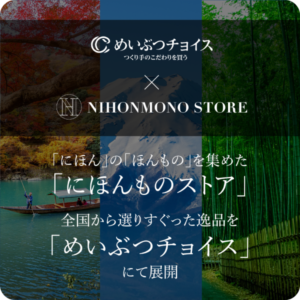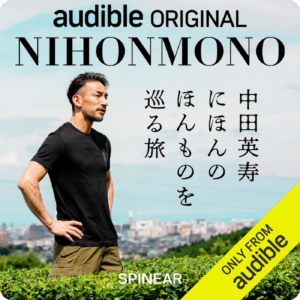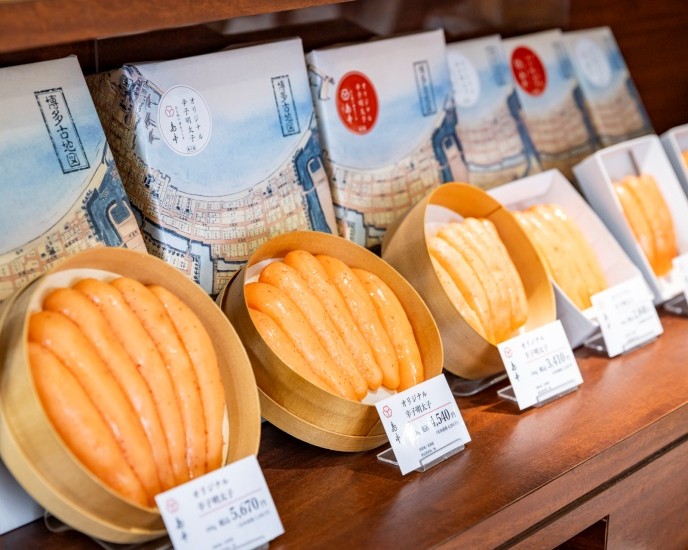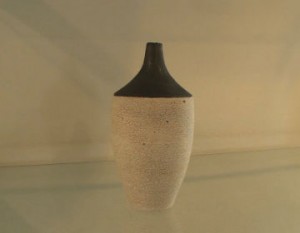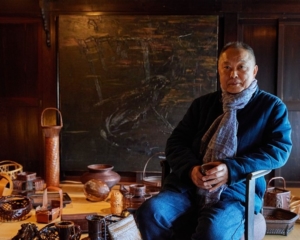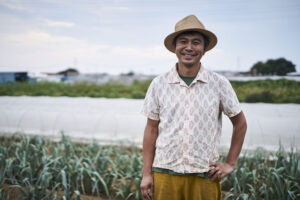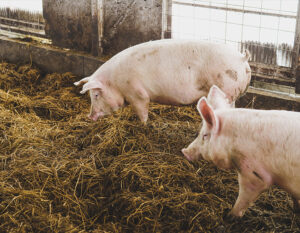Bring Japanese cod roe to your table without freezing it

The raw material for spicy cod roe is cod roe called tarako. Spicy cod roe is made by marinating the roe in salted cod roe and then marinating it in a seasoning solution to which red pepper has been added. In Japan, it has long been customary to eat salted cod roe as a preserved food, but the spicy cod roe we eat today was born in Hakata, Fukuoka, after World War II. Toshio Kawahara, the founder of Hakata-based “Fukuya Co., Ltd.” invented the spicy cod roe kimchi-zuke, which he had eaten in Pusan as a child, and arranged it for the Japanese. As its deliciousness gradually gained popularity and demand grew, Mr. Kawahara generously disclosed his recipe, and many stores in Hakata began making cod roe using their own creative methods and flavoring, and it became a national specialty. Shimamoto Foods is one such company that has been making spicy cod roe since 1976.
Dual role of seafood wholesaler and mentaiko specialty store

When you visit the head office of Shimamoto Shokuhin, you will see the “Hatae Corporation” logo on the signboard at the entrance. This is the parent company of Shimamoto Foods, a wholesaler specializing in marine products founded in 1948, shortly after the end of World War II, by the grandfather of the company’s president, Masatake Hatae. Since its inception, Hatae has been visiting producers throughout Japan to select and stock high quality marine products. While visiting the beaches of Hokkaido in search of kelp, he came across high-quality cod roe and began wholesaling the raw material to a spicy cod roe manufacturer in Fukuoka.
Later, he took over Shimamoto Shokuhin Co., Ltd. a mentaiko manufacturer that was having trouble finding a successor. The family business of “finding and selling” was now joined by a new path of “making and selling.
Focusing on the rare waters around Hokkaido

When taking over the Mentaiko specialty store, the company’s policy was to use pollock roe landed in the waters around Hokkaido. This was also a matter of course for a marine products wholesaler.
Pollack is not caught in the waters around Kyushu, but rather in the colder regions north of Hokkaido. In addition, the recent abnormal weather has caused sea water temperatures to rise, and the habitat area for Alaska Pollack has gradually moved northward. Since foreign products are cheaper, not to mention more plentiful, many manufacturers are switching to foreign products, but Shimamoto Shokuhin continues to adhere to its policy of using domestically produced products.
The taste of eggs differs depending on the fishing grounds and fishing season
The reason why Shimamoto Foods insists on domestic production is because the quality of the eggs is different. When comparing cod roe from different regions, the roe from the waters around Hokkaido has a richer flavor and more granularity than imported roe. In addition to the region, the degree of growth of the roe also influences the taste and texture, so the fishing season is limited to December through January, the spawning season for walleye pollack, and the mature roes, called “mako,” which are suitable for cod roe, are carefully selected from the six stages of growth from immature roe to just before giving birth.
In addition, a luxurious product using only eggs from Kubka Bay in Hokkaido is also available in limited quantities and for a limited period of time. Located in the southwestern part of Hokkaido, Eruption Bay is known as a place where walleye pollock come to lay their eggs due to its calm waves, rich nutrition, and continental shelf suitable for spawning. It has a reputation among fishermen for being “deliciously different! It is a must-try for those who want to taste the top-rated spicy cod roe.
Techniques to keep freshness without freezing as much as possible

Pollack is a delicate fish whose flesh and roe tend to lose their freshness easily, so the processing of the fish must be done quickly by professionals. When the fish is from overseas, the roe is often removed from the fish or on board the ship and frozen for distribution, and no matter how advanced freezing technology has become, the flavor of the roe is inevitably lost along with the water through repeated freezing and thawing.
This is one of the main reasons why Shimamoto Foods insists on domestically produced inshore fish. Fish caught in the waters around Hokkaido are unloaded at the port and transported directly to the group’s processing plant in Wakkanai, Hokkaido, without being frozen. The roe is then pickled in salt, which serves both to preserve the roe and to remove excess water to enhance the flavor of the roe. After the first stage of processing in Hokkaido, the cod roe is transported to the Hakata factory. In Hakata, the cod roe, which has been tightly packed with salt, is dipped in a seasoning solution as the second stage of processing. The cod roe is then soaked in the seasoning solution to produce plump, firm spicy cod roe.
The mentaiko is then frozen to preserve its freshness. However, Shimamoto Shokuhin, which insists on freshness, also sells “freshly made spicy cod roe” for a limited time only.
To maximize the natural flavor of eggs
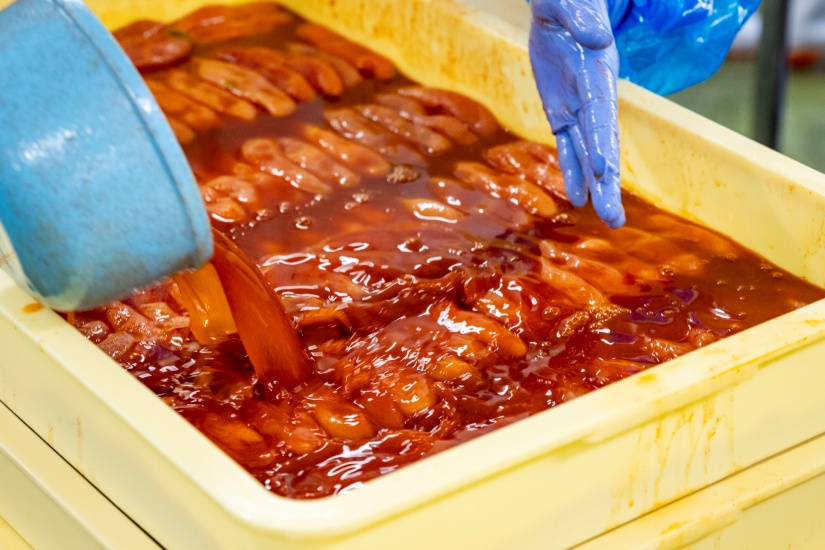
In addition, they have also devised a unique seasoning formula that allows the taste of tarako to be enjoyed to its fullest. Incidentally, each manufacturer of Hakata’s spicy cod roe has its own unique seasoning, which is one of the criteria for selecting cod roe.
One of the characteristics of Shimamoto Shokuhin’s seasoning liquid is the use of shochu (distilled spirit). Sake has the role of reducing fishy smells and adding richness and flavor, and many places use sake, but sake has a strong aroma and aftertaste that can interfere with the flavor of the ingredients.
In order to make the flavor of the codfish stand out, the seasoning is kept to a minimum, while the seasoning itself is made stronger, and the marinating time is kept as short as possible at 24 hours. This is another way to maintain freshness. Because fresh cod roe is so beautifully colored, no coloring agents are used. Shimamoto Shokuhin’s cod roe is characterized by its simple and gentle taste, which is safe for everyone from children to adults.

Among them, “Original Mentaiko” made from carefully selected cod roe from Hokkaido using traditional methods is a masterpiece that can be considered the starting point of “Shimamoto Shokuhin”. We hope you will taste it as it is, served on top of freshly cooked rice. The fine grains burst out and melt smoothly on your tongue, and the delicious flavor spreads softly in your mouth. The quality and freshness of the ingredients is what Shimamoto Shokuhin values most, and you can feel it when you taste this.
Numerous processed products using fresh cod roe
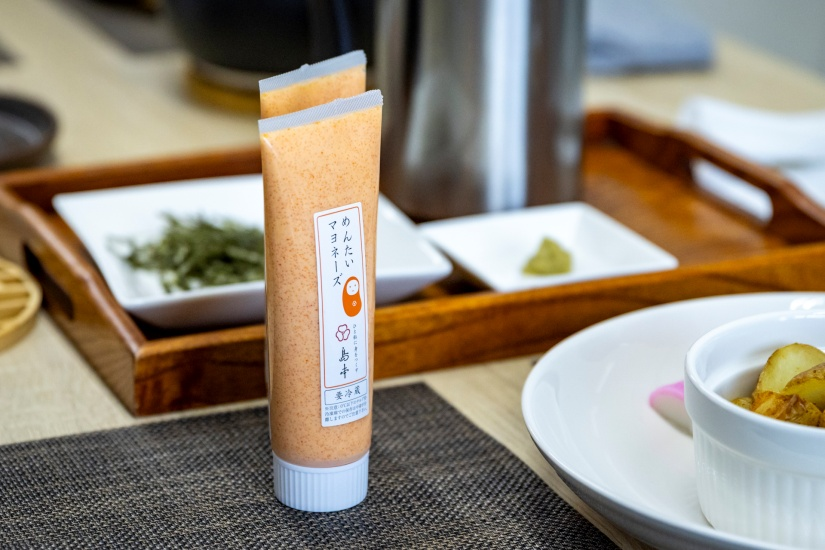
Mentaiko eggs that are torn in the process of making mentaiko, are too small, or are not made into products despite being good eggs, are either sold for home use or used in processed products. Among these, “mentaiko mayonnaise” is particularly popular. It can be used in an infinite number of ways, such as on toasted bread or with noodles. It is especially good with fried foods, such as fried chicken, fried shrimp, and French fries. The ease of use is another reason for its popularity among young people. Shimamoto Shokuhin is also proud of its squid mentaiko, which is squid so fresh that it can be served as sashimi, dressed with a generous amount of mentaiko. The sweetness of the squid combined with the saltiness of the cod roe will make both rice and sake go down a treat.
Shimamoto Shokuhin plans to develop more and more products to let people around the world know the deliciousness of mentaiko from Fukuoka. First, they are developing a sauce for Asia, which has a similar food culture.

Third-generation president Seigo Hatae is bewildered by the recent dizzying changes in the sea and keenly aware of the importance of protecting the environment. Not only in Hokkaido, but I think it is important to limit the amount of fish caught and to protect and manage them properly. We cannot mass-produce because we insist on domestic production, but I hope we can at least maintain the current amount. In order to do so, I think we must protect the local industry as well as the environment.
Mr. Hatae is concerned that a decrease in fish catch will lead to a decrease in the number of processors, and as a result, the region will decline and become unviable. 5 years ago, he merged with a processing plant in Hokkaido to pass on the local industry to the next generation, a step toward recovery.
Protecting the environment, protecting the community, and protecting customers. This is the driving force behind Shimamoto Shokuhin’s mentaiko production.
